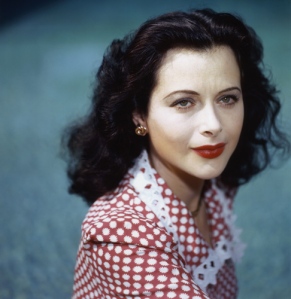A little over two weeks ago Penny University held its first ever live event as part of the Manchester Science Festival.
The event was called “21st Century Coffee House” and we invited people to join us at the MOSI cafe for a 21st century coffee house experience, at a 17th century admission rate (1p)!
It was an opportunity to take part in a scientific tradition, enjoying presentations by a variety of researchers while sipping a cup of C. canephora/arabica infused H2O (coffee) – featuring science-themed latte art. (C. sinensis infused H2O (tea) was also available.)
We had a good turnout, despite the miserable weather (it was touch-and-go whether we’d have to row our car out of the car-park on the aptly named Water Street after the event). The brave individuals who filled out the cafe were treated to presentations and demonstrations by the following people:
Tom Booth (University of Sheffield) – Where’s my mummy?: Searching for mummification in the British Bronze Age: A look at how the destructive procecesses of decomposition may aid in the identification of funerary treatments that were practiced in the past.
Sarah Moller (University of York) – From Oranges to Climate Change: Find out how oranges affect air quality, why clouds are influenced by this, and why some scientists thought a giant hose pipe could be the answer to climate change.
Naomi Pollock (University of Manchester) – Cystic Fibrosis: Cure Found?: A new drug has been developed that drastically increases the life expectancy of some sufferers of cystic fibrosis (CF), so can we say that CF now stands for ‘cure found’?
Ian Russell – Lighting the Flame, Not Just Filling the Bucket: Ian Russell will demonstrate how his quarter-century-old science show for children evolved into a distillation of his personal ‘science communication philosophy’. He will also explode some custard.
One of our speakers came up ill at the last minute* and so I put together a slightly longer than originally planned presentation on the ‘The Hidden and Forbidden World of Coffee’. The aim was to get the night started by reminding people about the origins of what had brought us all together… coffee (and by association, coffee houses).
It must have gone over alright because during the Q&As afterwards someone asked me about coffee plants, to which I had to respond, “I’m very sorry, but I don’t actually study coffee – I study human remains!” These are very different things. We did manage to come up with an acceptable answer though: the bitter-tasting caffeine in the coffee plant is a toxic deterrent to many animals, which is of benefit to the plant (although sadly not as much since us humans discovered we love that delicious bitter toxic taste). There was an awful lot of interest in the speakers’ topics – we know now that next time we’ll have to plan more time for discussion!
If you missed the night, there is no need to fret about missing the amazing research that was discussed, as there will be interviews with all the speakers up on the website in the future.
But if you can’t wait for the interviews, there were a couple of individuals who attended the night who mentioned it in their blogpost roundups of the Science Festival. They also have pictures, which is great because I was too busy to actually snap any on the night.
Trivial Travels: MSF 2013- 21st Century Coffee House (Penny University) by James Jackman
Bio Fluff: Out and about at Manchester Science Festival #msf13 by Liz Granger
There are a lot of science communication endeavours around and Penny University is a part-time love, which I wish I could devote more time towards (we do have more interviews in progress, swearsies).
I really enjoy the other events that are going on out there that engage audiences with academic research. I attend many of them – and recently I’ve started participating in them too by giving my own talks. However, I like to think that Penny University has something a little different (which honestly, is probably the lack of alcohol – so either you’ll love the difference or you’ll hate it).
This live event was a massive learning curve and I’d like to take the time to thank everyone at the Festival who helped make it happen, as well as everyone who attended, and of course everyone who presented.
If you are interested in there being more live Penny University events, please let us know! We promise to keep learning every time we do one, so they just keep getting better (and tastier).
Ta!
* Deborah Oakley – A Pharmaceutical Revolution: Transparency in medicine is vital: the All Trials Campaign and why it’s so vital. Deborah will also be interviewed for the website, so no one need fret – even if they were there!

